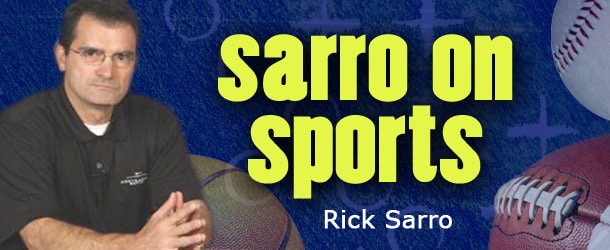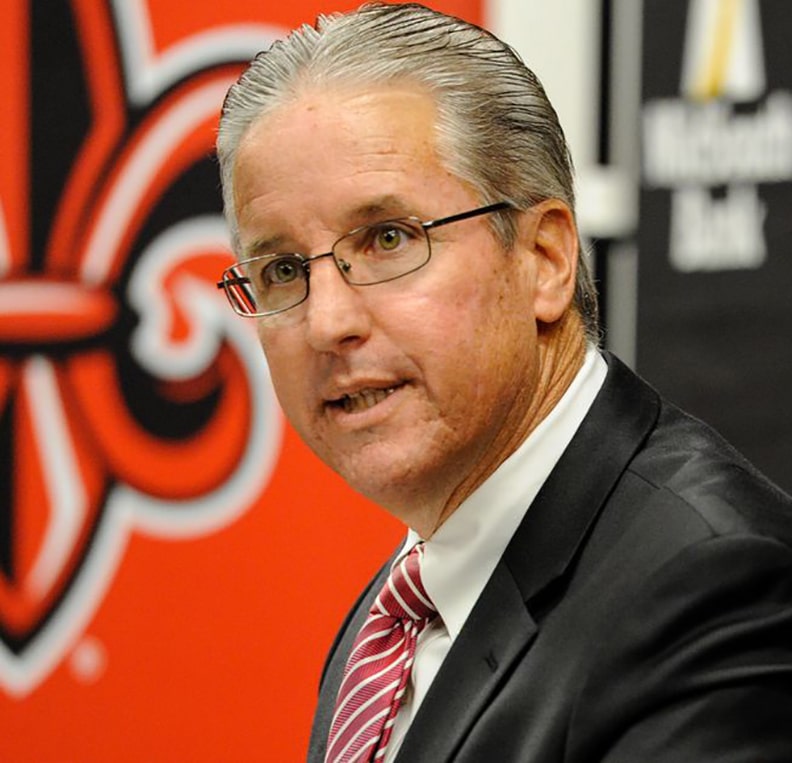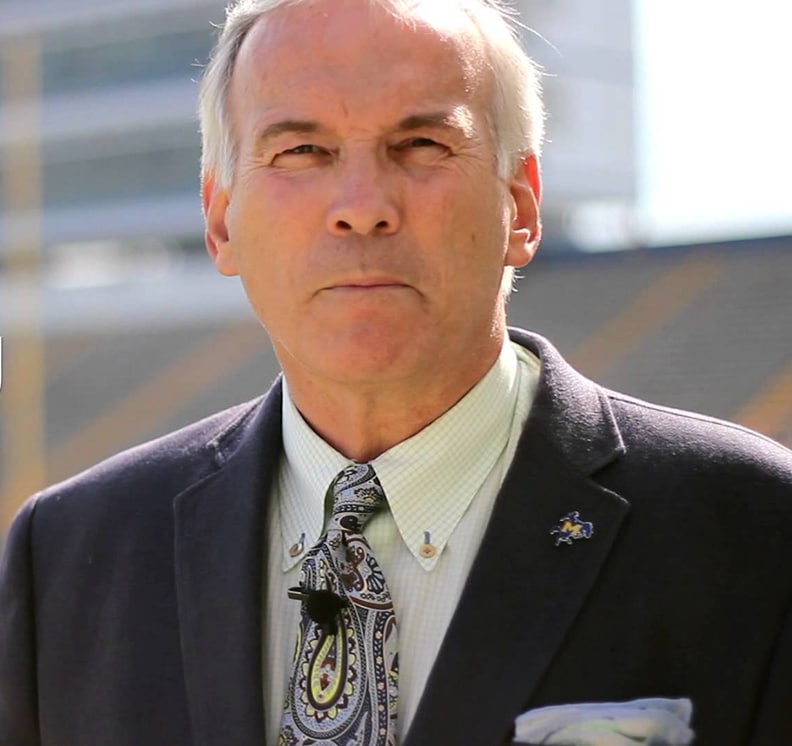Life isn’t as simple as it once was.
That goes for college football, too.
From 1951 through 1986, McNeese and what was then USL squared off on the football field for 36 straight years, establishing one of the most heated rivalries in Louisiana sports.
Year in and year out, the Cowboys and Cajuns drew record attendance either in Lake Charles or Lafayette. The games were like the Hatfields and McCoys. The players were all from the region stretching from West Calcasieu to Ascension Parish, as far south as the sugar cane rows of Patterson to the soybean fields of Avoyelles Parish.
Often, the rivalry split families and marriages alike. It didn’t have as long a history as Michigan and Ohio State or Alabama-Auburn, but the McNeese-USL rivalry was as heated and intense.
Over four generations, the game was an annual rite of passage for both teams. The Cowboys held a 19-15-2 series edge. Many of the games were hard-fought, white-knuckle battles in the old Gulf States Conference, and later, when the teams were Southland Conferences rivals.
It all came to a screeching halt when USL decided to make the jump from the NCAA 1-AA ranks to the larger Division 1-A as an independent, and eventually joined the Sun Belt Conference. McNeese athletic officials thought it best at the time to remain in the Southland and compete in 1-AA.
Thirty-five years of turf wars and memories ended — to the chagrin of thousands of fans across Southwest Louisiana and the Acadiana parishes.
It was a shame.
Why end a rich and storied rivalry that is the heart and soul of what college football should be?
Border wars are hard to come by because there are so few borders.
On my return to Louisiana after sportscasting stints in Alabama and Florida, I called for the state Legislature in Baton Rouge to get involved and bring McNeese and the now renamed University of Louisiana at Lafayette to the table to resume the game.
I did the same as an outsider working in the Alabama sports media, posing the blasphemous question on the air: Why did the famous Iron Bowl between Alabama and Auburn have to be played in Birmingham, which obviously favored the Crimson Tide home crowd from the northern reaches of the state?
Alabama fans thought I just landed in Montgomery from Mars.
It’s the Iron Bowl. It was Birmingham’s game, I was told. No one could give me a good reason why the yearly battle of bitter rivals was not rotated and played in the southern plains of Auburn.
The Alabama state Legislature eventually stuck their noses into the matter, and after I was long gone, the two universities finally agreed that the Tide and Tigers would be a home and home series.
My point is sports should not be like brokering a Middle East peace agreement. But in the case of McNeese and UL-L between the years of 1987 and 2007, resuming the rivalry appeared to be more difficult than getting the Israelis and Palestinians to agree on something.
It took 20 years before the game resumed on September 15, 2007. The Cowboys rode out of Lafayette with an easy 38-17 romp over UL-L. For McNeese fans, the final score was proof that being bigger (Division 1-A) did not mean being better. I figured the lopsided loss might keep UL-L from the negotiating table for any future games.
I was right in some ways, as it took another nine years and upwards of 308 games played by the two teams before the Pokes and Ragin’ Cajuns faced each other again on a Saturday night at Cajun Field.
Walking through competing tailgating camps and talking with both sides before kick-off, the phrases I heard most were “just play the damn game” and “it shouldn’t take nearly 10 years for us to play each other being only an hour away.”
I agreed. But in the complex world of college football, nothing is as simple as “just play the game.”
Different divisions (FBS and FCS) have different power ranking implications. Individual conference rules (pertaining to the larger FBS leagues, like the Sun Belt) and the high number of conference games that must be played annually leave scant opportunities for non-conference games.
And then there is the money issue.
For UL-L to help pay for an aggressive “three-tiered” plan of improvements to athletic facilities, they need at least one large guaranteed money game on their schedule. This season, they traveled to Tulane (a very modest payout) and head to Georgia Nov. 19 (at least $500,000).
UL-L athletic director Scott Farmer points to all these “variables,” and a few others, that make scheduling a very difficult task. “We try and do a big money game a year; an FCS school a year; and two home and home. We try and rotate the inter-state FCS schools like LSU has done. We play Northwestern State. We played Southern and have Southeastern on the schedule too.”
When asked about the nine-year gap since the 2007 game, Farmer couldn’t recall why and how this game couldn’t be scheduled sooner. “I don’t know if we tried to get it and we didn’t have the slot or McNeese wanted the game [but] we didn’t have the date open. I’ll be honest. I don’t recall off the top of my head why it’s been nine years. But that’s another issue. We are working right now on 2021 and ‘22. That’s how far out we are working. It’s a difficult thing; it really is.”
Farmer, who’s been A.D. since October, 2011, has heard rumblings from the Blue & Gold faction that UL-L has been hesitant to play McNeese out of fear of losing. The risk/reward factor against good FCS schools wouldn’t be in UL-L’s favor.
Farmer was quick to wave that notion off. “No, [that’s] not really [an issue]. Honestly, no, I don’t buy into that. It is more about spreading the wealth around among the FCS teams in our own state. [It’s] kind of similar to what LSU has done. They try and rotate around too. We are not playing them every four years either.
“Scheduling is a difficult thing. It’s not as easy as calling up and playing next year. It doesn’t happen that way.”
McNeese athletic director Bruce Hemphill says the Cowboys will net about $225,000 from the UL-L game after expenses.
Compare that figure to the $400,000 McNeese was paid to play Nebraska; or the $500,000 from last year’s unfortunate lightning-cancelled game at LSU. Keep in mind those are gross payouts. McNeese still had to cover a wide array of expenses and overhead — like flying, hotels, food, tickets and transportation to play the Cornhuskers in Lincoln.
The travel expenses were much reduced for the game at LSU, of course, so that’s the guaranteed game of choice, and that explains why it’s so sought-after by every other in-state program, including UL-L.
Hemphill is personal friends with UL-L president Dr. E. Joseph Savoie, which helped get this year’s game on the schedule. “The first day I was on the job, I saw Dr. Savoie, and he introduced me to his A.D. Scott Farmer and said, ‘Let’s get this football game worked out,’ and he walked away. So the talks began immediately, and we hope to have another one set soon.”
Due to conference games and changes in their dates, Hemphill doesn’t see another UL-L game on the horizon until 2018 or ‘19 at the earliest. My impression from Farmer, who was noncommittal on the subject, was that it would be further out than that. Keep in mind McNeese has a road game at Oklahoma State under contract for 2019.
McNeese would prefer a 12-game schedule but is limited to an 11-game slate based on some antiquated, draconian set of calendar rules. Every blue moon, the Cowboys can get a 12th game on the schedule, which results in three non-conference games. With nine SLC games to be contested, there aren’t many options for UL-L or another big pay day game and the scheduling of a smaller Division II team, which is something McNeese likes to do to ensure at least a five-game home schedule.
I think a four- or five-year rotation for McNeese versus UL-L wouldn’t be a bad thing in the context of this scheduling quagmire.
The term “Legacy McNeese and UL-L fans” is a kind way of referring to the older followers of the two teams. These fans still remember the old Southland battles of yore. But their ranks are shrinking. Many, if not all, of the Cowboys and Cajuns players who competed over the weekend weren’t even born when the annual series ended in 1986.
The demographics of the two schools’ fan base are changing and getting younger. The young fans don’t know the history of the past rivalry or harbor the good-natured hatred or ill-will against each other that their parents and grandparents did. Those 20 years between 1986 and 2007’s historic rematch took care of that. The long nine years since the ’07 game didn’t help.
The 2007 McNeese game ranks as the fifth most attended home game in the history of Cajun Field, with a gate of 33,828 fans. Saturday’s 26,000-plus attendance doesn’t crack UL-L’s top 20.
There was a strong contingent of Cowboys fans in attendance Saturday night, but not at the level of nine years ago. KPLC-TV’s broadcast of the game may have kept some McNeese fans home in front of their big screens.
There was a lot of red and white. But it was far from a sell-out crowd.
The game is still a great regional match-up, with an undeniable cachet for both schools. But maybe, just maybe, the zeal and passion of the two fan bases have waned.
I am convinced the rivalry and the game’s history means more to the McNeese faithful than to Cajuns fans. USL/UL-L was always bigger and had a better stadium and more money. The Cowboys relished the fact they could and did win more of the match-ups against big brother from the East.
The feeling I got from the UL-L fans and their well-healed boosters I was around is that the Ragin’ Cajuns have moved on from their 1-AA past. They think of themselves as a true mid-major program bolstered by their recent history of four straight New Orleans Bowl championships. UL-L is confident and comfortable moving among the big boys of the SEC and Big 12. The sense I got was that UL-L doesn’t need or really want that annual connection or rivalry with McNeese. Their FBS Sun Belt Conference rivals mean more in the end game, and they’re probably right about that.
In 2009, UL-L established the Ragin’ Cajun Athletic Foundation, which provides financial support to the school’s 16 varsity programs. According to Farmer, the RCAF raised $9.9 million last year. Football season ticket sales have increased the last three years. (Farmer says they’re down this year following last season’s first losing season under head coach Mark Hudspeth.) Corporate sponsorship has doubled in the last few years, and UL-L is three years into a $115-million Athletic Facilities Master Plan launched in 2013.
I don’t want to burst anyone’s bubble, but UL-L is still bigger and richer than McNeese. The University’s enrollment is 19,000-plus, compared to McNeese’s 8,200. The population of Lafayette and surrounding parishes doubles that of Lake Charles and Calcasieu parish. And UL-L has been able to foster and grow more corporate support and sponsorship dollars from regional businesses.
That being said, the Cowboys can still compete and win on the football field against the likes of UL-L, South Florida and Middle Tennessee State among the mid-majors. McNeese takes pride in that, and is secure in its position among the elite of the FCS.
The rekindled series with the Ragin’ Cajuns now stands at 1-1, following UL-L’s 30-22 win over the Cowboys. It was a close, physical, hard-fought battle between two old rivals that proved once again that the colors Blue & Gold and Red & White still clash, no matter how much time has passed.



















Comments are closed.